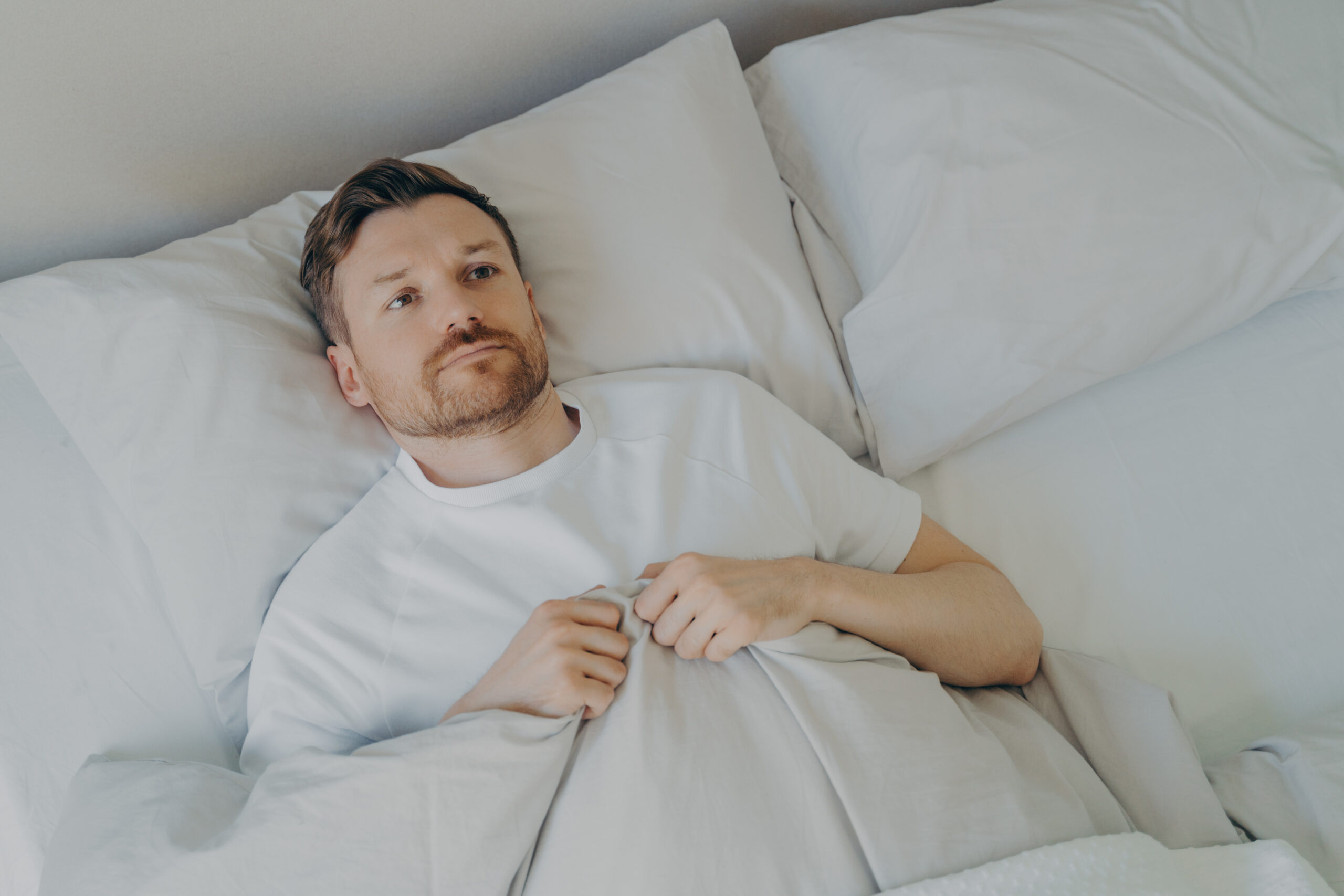Written by Keely Puchalski, ND. Results from this study demonstrated that a 100 mg dose of Valeriana officinalis extract significantly improved sleep quality in adults with self-reported insomnia. Though effects were modest, improvements in several parameters were comparable or superior to diazepam (5 mg), with fewer adverse effects reported in the valerian group after 28 days.
 Insomnia is a prevalent and often chronic condition that negatively affects quality of life, cognitive function, and immune health1,2. In Brazil, benzodiazepines such as diazepam remain widely used for insomnia treatment via the public Unified Health System (SUS)3. However, concerns about dependency, tolerance, and adverse cognitive effects have prompted global health authorities to advocate for cognitive behavioral therapy for insomnia (CBT-I) as a first-line approach4. Access to CBT remains limited in many regions, increasing interest in safe, evidence-based alternatives like herbal medicine.
Insomnia is a prevalent and often chronic condition that negatively affects quality of life, cognitive function, and immune health1,2. In Brazil, benzodiazepines such as diazepam remain widely used for insomnia treatment via the public Unified Health System (SUS)3. However, concerns about dependency, tolerance, and adverse cognitive effects have prompted global health authorities to advocate for cognitive behavioral therapy for insomnia (CBT-I) as a first-line approach4. Access to CBT remains limited in many regions, increasing interest in safe, evidence-based alternatives like herbal medicine.
Valeriana officinalis (valerian) is traditionally used for sleep and relaxation. Its bioactive components, including valerenic acid and valepotriates, are thought to modulate GABA-A receptors and promote sleep onset5. Despite a long history of use, clinical data on valerian’s efficacy remain inconsistent, largely due to variation in dose, standardization, and trial quality6,7.
To investigate valerian’s performance in a primary care setting, Antunes et al. (2025) conducted a quasi-experimental (i.e. participants were non-randomly assigned) controlled clinical trial involving adults aged 18 to 80 years who presented to SUS clinics in Igrejinha, Brazil. Participants were assigned to one of two groups and received either standardized dried valerian root extract with at least 0.02% of valeremic acid (100 mg capsule nightly) or diazepam (5 mg nightly) for 28 days. A total of 80 participants completed the study and follow up, with a mean age of 54 years, and 71% were female.
Sleep quality was assessed using two validated instruments:
- The Pittsburgh Sleep Quality Index (PSQI) – the study’s primary endpoint
- The Sleep Hygiene Index (SHI) – a survey that tracks behaviors that affect sleep
Data were analyzed using two-way repeated measures ANOVA, with post hoc Fisher’s LSD tests to compare pre- and post-treatment scores within and between groups. Median and interquartile ranges were reported for non-parametric data. A p-value of <0.05 was considered statistically significant.
Key findings from the study included:
Pittsburgh Sleep Quality Index (PSQI):
- Total PSQI score improved significantly over time (p = 0.012), with post hoc analysis showing the total change was significant only in the valerian group
- Valerian extract led to improvements after 28 days in the following PSQI categories:
- Subjective sleep quality (p = 0.0053)
- Sleep duration (p = 0.0006)
- Sleep efficiency (p = 0.0275)
- Sleep disturbances (p = 0.0033)
- Diazepam mildly improved subjective sleep quality and duration (pre-post improvements) but results were non-significant.
- Although statistically significant, global PSQI changes in the valerian group were modest. Most component scores improved by ~0.5 points (scale = 0–3), suggesting mild subjective improvements.
Sleep Hygiene Index (SHI):
- Valerian significantly reduced stimulant/alcohol use before bedtime compared to both baseline (time) and diazepam (group) (SHI-6; p = 0.0065, p = 0.0233)
- Diazepam group significantly reduced thinking, planning, or worrying before bed compared to baseline wakeful behaviors before bed (SHI-13; p = 0.04)
*Most SHI categories (1-13) remained unchanged in both groups at 28 days, and significant changes were subtle, with small shifts in median scores (often 0.5 to 1 point on a 5-point scale).
Adverse Effects
- Valerian group: 8.1% reported mild side effects (e.g., dizziness, sedation, stimulant effects, insomnia)
- Diazepam group: 35.5% reported side effects (e.g., fatigue, nausea, mydriasis, headache, tremors, tachycardia)
- Adverse effects were significantly more common with diazepam (p = 0.007)
Given the quasi-experimental design and potential for selection bias, future studies employing randomized, blinded, and placebo-controlled methods are essential to validate these results. The low valerian dose (100 mg) may not reflect therapeutic dosing commonly used in other countries (300–600 mg). The population was small (80) and duration (28 days) was short; longer trials are needed to assess sustained effectiveness and safety. Outcomes were based on self-reported questionnaires without objective sleep measures like actigraphy or polysomnography. Despite these limitations, the study reflects real-world clinical conditions and is notable for being conducted entirely within Brazil’s public health system.
Valerian extract at 100 mg nightly modestly improved multiple aspects of sleep quality and hygiene in adults with insomnia, with fewer side effects than diazepam. While sleep improvements were statistically significant, they were mild in magnitude, suggesting valerian may benefit those with mild-to-moderate insomnia or those seeking alternatives to sedative medications. However, one major concern is the observed increase in sleep medication use within the valerian group over the course of the study. While high usage was expected in the diazepam group (score = 3/3), the valerian group also reached the maximum score by study end, despite starting with more variability. This raises important questions about whether participants in the valerian group may have supplemented with other sleep aids, potentially confounding the results. The findings nonetheless support valerian’s inclusion in integrative sleep strategies within primary care, especially in regions with limited access to behavioral therapies.
Source: Antunes, Jorge Nei Borba, Rebeca Vargas Antunes Schunck, Caroline Dani, and Ionara Rodrigues Siqueira. “Valeriana officinalis Extract Improves Sleep Quality in Primary Health Care in Brazil: A Controlled and Quasi-Experimental Study.” IJCMCR. 2025; 49 (5) 4.
© All rights are reserved by Jorge Nei Borba Antunes, Rebeca Vargas Antunes Schunck, Caroline Dani and Ionara Rodrigues Siqueira*
Click here to read the full text study.
Posted August 13, 2025.
Keely Puchalski, ND, is a naturopathic physician and natural products expert specializing in integrative psychiatry, gut health, and chronic illness. She earned her ND from Sonoran University of Health Sciences (formerly Southwest College of Naturopathic Medicine) in 2020. She co-founded Restored Counseling & Wellness Center in Gilbert, AZ where she practices with a team of therapists and naturopathic doctors: https://restoredcw.com
References:
- Roth T. Insomnia: definition, prevalence, etiology, and consequences. Journal of clinical sleep medicine: JCSM: official publication of the American Academy of Sleep Medicine. 2007;3(5 Suppl):S7.
- Fernandez-Mendoza J, Vgontzas AN. Insomnia and its impact on physical and mental health. Curr Psychiatry Rep. Dec 2013;15(12):418. doi:10.1007/s11920-013-0418-8
- Madruga CS, Paim TL, Palhares HN, et al. Prevalence of and pathways to benzodiazepine use in Brazil: the role of depression, sleep, and sedentary lifestyle. Braz J Psychiatry. Jan-Feb 2019;41(1):44-50. doi:10.1590/1516-4446-2018-0088
- Qaseem A, Kansagara D, Forciea MA, Cooke M, Denberg TD. Management of Chronic Insomnia Disorder in Adults: A Clinical Practice Guideline From the American College of Physicians. Ann Intern Med. Jul 19 2016;165(2):125-33. doi:10.7326/m15-2175
- Shinjyo N, Waddell G, Green J. Valerian Root in Treating Sleep Problems and Associated Disorders-A Systematic Review and Meta-Analysis. J Evid Based Integr Med. Jan-Dec 2020;25:2515690×20967323. doi:10.1177/2515690×20967323
- Fernández-San-Martín MI, Masa-Font R, Palacios-Soler L, Sancho-Gómez P, Calbó-Caldentey C, Flores-Mateo G. Effectiveness of Valerian on insomnia: a meta-analysis of randomized placebo-controlled trials. Sleep Med. Jun 2010;11(6):505-11. doi:10.1016/j.sleep.2009.12.009
- Bent S, Padula A, Moore D, Patterson M, Mehling W. Valerian for sleep: a systematic review and meta-analysis. Am J Med. Dec 2006;119(12):1005-12. doi:10.1016/j.amjmed.2006.02.026







Comments (0)